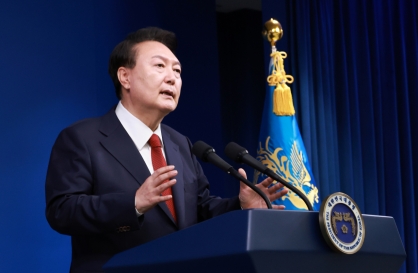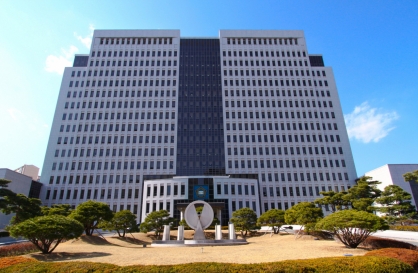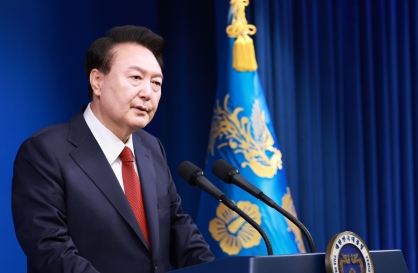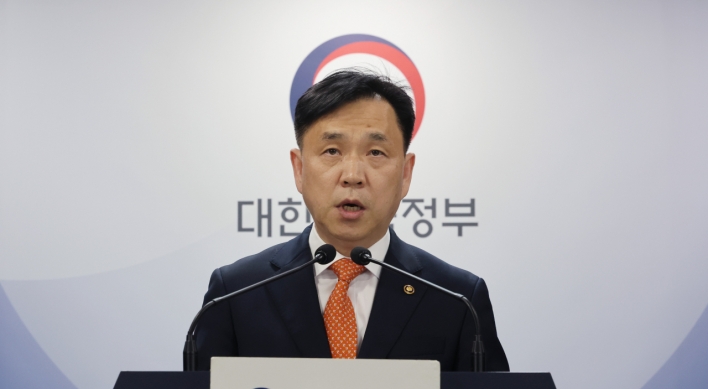[Salman Haider] India, the Silk Road and pan-Asian initiatives
By 김케빈도현Published : June 23, 2016 - 16:20
 The sporadic discord and skirmishes notwithstanding, Sino-Indian ties still move on an even keel of cooperation and engagement. The Silk Road project — linking China to all the major business and cultural hubs across Asia — might enhance the scope of friendship
The sporadic discord and skirmishes notwithstanding, Sino-Indian ties still move on an even keel of cooperation and engagement. The Silk Road project — linking China to all the major business and cultural hubs across Asia — might enhance the scope of friendshipThere is no letup in China’s effort to give body and substance to its initiative of reviving the fabled Silk Road. In its earliest form, this was a caravan route across the heart of Asia to carry Chinese products, silk above all — hence the name — to markets in Europe where they were greatly prized.
It was no single thoroughfare comparable to the highways of today, comprising a number of tributary routes that linked numerous manufacturing and trading centers along the main path of the traffic. India was an important part of this overland trading structure, both as manufacturer and as consumer of traded goods.
In fact, a southern Silk Route linking southern China with India was found to have been established at local initiative and without the required central authorization, to the discomfiture of the provincial governor. It was only with the European ascendancy of the last two or three centuries that the overland route decayed, being superseded by the seaborne traffic controlled by European seafarers.
China’s modern-day reemergence as a major manufacturing and trading power thus delves into half-remembered experience of a time when the global balance of advantage in trade was tilted toward Asia. Hence there is a sense of redress in this current Silk Road initiative, which can be seen as restoring economic benefit to regions that had been left behind and of asserting China’s enlarged global role as an economic power.
Characteristically, this initiative is not just a passing thought in Beijing but has led to careful assessment and planning for further developments.
The new Silk Road scheme is a complicated effort involving several partners and requiring their willing participation if it is to succeed. Thus China has taken a more low-key and cooperative path in its development — nothing like the assertive Chinese posture to be seen elsewhere on its periphery, as in the South China Sea.
It is noteworthy that even before the Silk Road initiative was given any kind of currency, or the One Belt One Road project as it is more commonly called today, China worked assiduously to remove the endemic jurisdictional and territorial issues that had complicated its relations in the region to its west, and that having been substantially achieved, it was in a position to move on to initiatives on a continental scale like the present one.
This is an expanding field of cooperation and supports the ambition of making the present century Asia’s century. Having enunciated the OBOR concept, China has tried to give practical shape by encouraging several road and rail projects that establish new links between the Asian heartland and its Eurasian periphery.
Nor is it a matter of physical infrastructure alone: Chinese scholars and universities have developed relations with counterparts elsewhere to discuss these relatively new concepts and where they are leading, and to try to envisage the benefits that can accrue to all partners. Only recently there was a major seminar in Beijing where a large number of scholars from the OBOR lands, including several from India, took part to share perceptions and highlight their sense of cultural interchange. Such events add a further dimension to the initiative and underline its distinctiveness.
The OBOR program contains many elements of interest to India. The original Silk Road had developed connections between India and far-flung regions in Central Asia, so some measure of revival has considerable relevance for India.
More immediately relevant to the Indian connection is the maritime component mentioned above which complements the overland link: this, too, picks up threads from a much earlier past and revives old connections. With the enlarging of maritime traffic in the Indian Ocean area, the comfortable semi-isolation that has served India well has become less marked; a number of new players are in the field — China prominent among them — and there are fresh challenges for India to handle.
In this changing world of Asia, where vast new developments have cropped up in rapid succession, India is well in the forefront and has become an important participant in the processes of change. This has become especially marked now that the Indian economy is robust and other major economies are faltering.
Beyond Asia, India’s more active quest for a global role is to be seen in its effort to be included in the Nuclear Suppliers Group, where its lobbying for international support was led by the prime minister himself, and India has been bold enough to make its bid even though circumstances do not appear entirely favorable.
In the Asian region, India has promoted more than one initiative for joint action, like the “Mausam Project” that looks at cultural and economic links among countries of the monsoon belt. This could be a rich field of shared activity and scholarly exchange all along the Indian Ocean littoral and some useful seminars and meetings have been held on this theme under Indian sponsorship. However, momentum on this project seems to have been lost and there is not much present sign of activity. In New Delhi nobody seems to “own” the project and the effort and resources it attracts are far from adequate for the task, not to be compared with the drive and energy brought to pan-Asian initiatives elsewhere, especially in China.
The variety of concepts about Asia’s future indicate that contending ideas and interests are at play. Not all of these concepts are Asian of provenance, and the U.S. “pivot” to Asia shows how other powerful players have been drawn into contention in Asia.
However, even if from time to time regional entities can be in confrontation, as has been witnessed in the South China Sea, their differences have hitherto been largely contained and solutions found from within the region itself. Tensions can and do arise from time to time — only recently there was another report of a Chinese incursion in a border area — but tensions have not been permitted to escalate or result in dangerous physical confrontations.
The prevailing spirit is still that of cooperation and economic development. That is why India has been able to reach out to China for support in its effort to gain admittance to the NSG, and that too despite the fact that China’s close ally Pakistan stands in the way with its claim for admission at the same time. The outcome cannot be predicted but the show of friendship with China and India’s outreach to that country may have a useful effect.
Salman Haider is India’s former foreign secretary. — Ed.
(The Statesman/Asia News Network)





![[K-pop’s dilemma] Can K-pop break free from ‘fandom’ model?](http://res.heraldm.com/phpwas/restmb_idxmake.php?idx=644&simg=/content/image/2024/05/09/20240509050541_0.jpg&u=20240509173751)




![[News Analysis] Yoon's first 2 years marked by intense confrontations, lack of leadership](http://res.heraldm.com/phpwas/restmb_idxmake.php?idx=644&simg=/content/image/2024/05/09/20240509050612_0.jpg&u=20240509233252)







![[Today’s K-pop] NCT’s Mark to drop 1st solo album in February 2025](http://res.heraldm.com/phpwas/restmb_idxmake.php?idx=642&simg=/content/image/2024/05/10/20240510050597_0.jpg&u=)